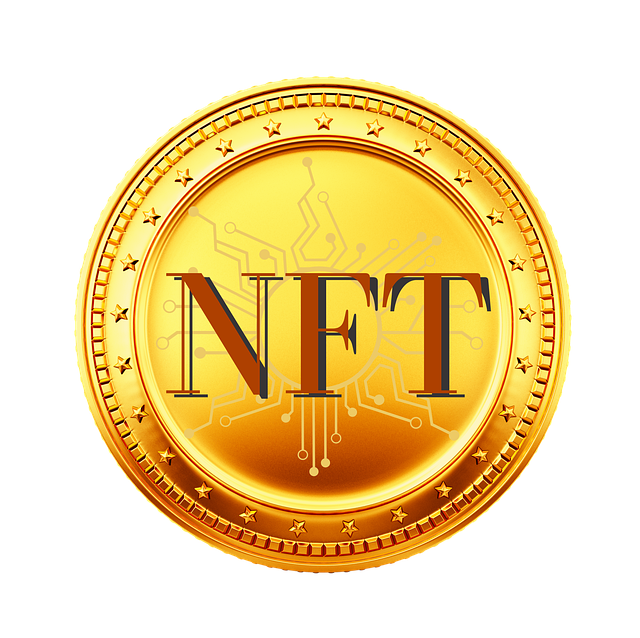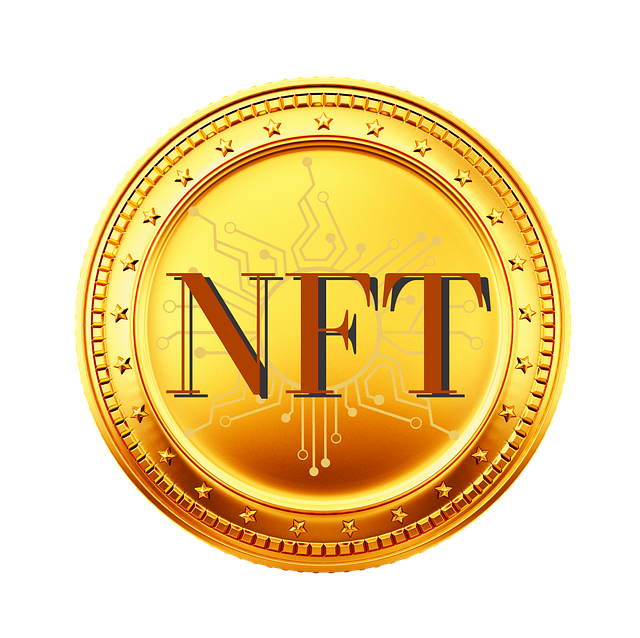Crypto Price Indicators in 2025: A Comprehensive Guide to Navigating the Evolving Market
Author: Jameson Richman Expert
Published On: 2025-09-09
Prepared by Jameson Richman and our team of experts with over a decade of experience in cryptocurrency and digital asset analysis. Learn more about us.
Understanding crypto price indicators has become an absolute necessity for traders and investors seeking to navigate the highly volatile and unpredictable cryptocurrency landscape of 2025. As the market continues its rapid evolution driven by technological innovations, regulatory changes, macroeconomic shifts, and emerging DeFi ecosystems, the reliance on sophisticated, accurate, and timely indicators has never been more critical. In this comprehensive guide, we explore the most effective technical tools, how they can be integrated into robust trading strategies, and the emerging trends that make 2025 a pivotal year for crypto market analysis.

Introduction to Crypto Price Indicators
Crypto price indicators are analytical algorithms and visual tools designed to interpret a wide array of market data—such as price, volume, order book dynamics, and blockchain-specific metrics—to forecast potential future movements. Unlike traditional financial markets, cryptocurrencies are affected by a complex interplay of factors including social sentiment, on-chain data, protocol upgrades, macroeconomic policies, and regulatory developments. These factors are increasingly incorporated into modern indicators, allowing traders to execute more informed decisions. Advanced indicators in 2025 not only analyze historical price action but also leverage artificial intelligence (AI), machine learning (ML) models, and real-time on-chain activity to generate predictive signals with higher precision, timeliness, and contextual relevance.
Types of Crypto Price Indicators
In 2025, traders employ a diverse array of indicators categorized into trend, momentum, volatility, volume, and crypto-specific metrics. Each type offers a unique lens on market conditions, and their combined use enhances decision-making accuracy. Let’s examine each category with insights into innovations, application nuances, and how they are adapted to the current ecosystem.
Trend Indicators
Trend indicators are essential for identifying the overarching market trajectory—whether bullish, bearish, or sideways. Traditional tools like Simple Moving Averages (SMA) and Exponential Moving Averages (EMA) remain foundational, but advancements include adaptive and machine learning-enhanced variants. For instance, the Adaptive Moving Average (AMA) and Hull Moving Average (HMA) dynamically adjust their sensitivity based on real-time volatility and market regime shifts, providing earlier signals of trend reversals or continuations.
In 2025, crossovers such as the Golden Cross or Death Cross are now often combined with on-chain signals—such as large whale transactions, staking activity, or protocol upgrade events—to confirm trend shifts. Multi-timeframe analysis and AI-driven pattern recognition further allow traders to identify emerging trends before they are fully reflected in price charts, offering a strategic advantage in fast-moving markets. Moreover, trend indicators are increasingly integrated with blockchain data analytics platforms that track network health metrics, such as hash rate or staking yields, to provide a fundamental backdrop to technical signals.
Momentum Indicators
Momentum indicators quantify the speed and strength of price movements, helping traders spot potential reversals or accelerations. Classic tools like RSI (Relative Strength Index) and MACD (Moving Average Convergence Divergence) are now augmented with machine learning models that interpret divergences more reliably. Deep learning algorithms analyze RSI divergence patterns in conjunction with volume spikes, order flow data, social sentiment, and network activity metrics to produce high-confidence trading signals.
Additionally, new momentum indicators such as the Relative Vigor Index (RVI), Chande Momentum Oscillator, and Market Momentum Index offer heightened sensitivity to short-term fluctuations, which are prevalent in crypto markets. These tools enable traders to react swiftly during high-volatility periods triggered by macroeconomic news, protocol forks, or regulatory announcements, ensuring they can capitalize on rapid market movements while minimizing the risk of false signals.
Volatility Indicators
Given the crypto markets' notorious swings, assessing volatility remains paramount. Bollinger Bands, in 2025, are enhanced with embedded implied volatility forecasts derived from options markets, akin to traditional finance. These signals provide anticipatory cues of potential breakouts or consolidations, allowing traders to prepare for volatility spikes with greater confidence.
The Average True Range (ATR), combined with a crypto-tailored Volatility Index (VIX), offers insights into market stability during macroeconomic shocks or geopolitical events. When Narrow Bollinger Bands are observed alongside rising ATR values, it often signals an imminent breakout—key information for timing entries and exits amid turbulent conditions. Furthermore, volatility prediction models now incorporate on-chain activity and social sentiment data, enabling a more holistic understanding of impending market shifts.
Volume Indicators
Volume analysis remains a cornerstone of technical analysis, serving to confirm or refute price movements. Traditional tools like On-Balance Volume (OBV), Chaikin Money Flow (CMF), and VWAP (Volume Weighted Average Price) continue to be relevant. However, in 2025, they are supplemented by demand/supply zone analysis through Market Profile and Volume Profile tools, which reveal critical support and resistance levels based on transaction density and order flow concentrations.
Volume spikes during key events—such as token burns, liquidity provider incentives, protocol upgrades, or large whale transactions—are scrutinized for their predictive power. On-chain metrics such as transaction counts, active addresses, token transfer volumes, and staking activity are integrated into volume analysis, providing a granular view of network health and investor sentiment that often precedes price movements. This integration allows traders to detect early signals of accumulation or distribution phases, aligning technical signals with fundamental network activity.
Advanced Crypto Price Indicators for 2025
The evolution of the crypto ecosystem has led to the development of advanced indicators that incorporate multi-source data analytics, blockchain-specific signals, and AI-driven predictive models. These tools provide traders with a more granular, forward-looking perspective on market dynamics, often blending traditional technical analysis with on-chain data, macroeconomic signals, and social sentiment analysis. This confluence of data sources enhances predictive accuracy and reduces false signals, making trading decisions more robust.
Order Book and Level 2 Data
Order book analysis has matured with real-time Level 2 data tools that reveal liquidity depth, bid-ask spreads, and the presence of large institutional or whale orders. Recognizing significant buy or sell walls at strategic levels allows traders to anticipate support and resistance zones with higher confidence. For example, detecting a large buy wall near a key support level may indicate strong institutional backing, while a sudden withdrawal of sell walls might signal an impending breakout.
Combining order book insights with technical indicators—such as momentum shifts or trend signals—enables market participants to gauge trader intent and market sentiment, often ahead of price action. This integration reduces lag and enhances precision during fast-moving markets or flash crashes. Additionally, advanced order book analytics now incorporate predictive modeling that forecasts potential liquidity shocks, further aiding strategic trade entries and exits.
Crypto-Specific Indicators
In 2025, crypto-specific metrics have become central to technical analysis, providing insights into underlying network fundamentals alongside price movements. Indicators such as whale transaction tracking, token burn rates, network hash rate, staking yields, and active on-chain addresses are correlated strongly with market trends. These metrics serve as leading indicators during major protocol upgrades, halving events, or macro shifts.
For instance, an uptick in whale transactions or a surge in on-chain activity can precede rally phases, while significant token burns or declining hash rates may signal potential downturns or network vulnerabilities. Incorporating these on-chain signals into trading strategies offers an early warning system aligned with fundamental network developments, enhancing market timing precision and risk management.

Integrating Indicators into Trading Strategies
In 2025, successful trading hinges on the integration of multiple indicators to confirm signals and mitigate the risk of false positives. Multi-layered approaches—such as combining a bullish MACD crossover with RSI oversold conditions, high-volume spikes, and support levels derived from order book analysis—are becoming standard practice. This layered validation helps traders distinguish genuine opportunities from market noise.
Furthermore, advanced strategies leverage machine learning algorithms that dynamically assign weights to different indicators based on current market regimes—whether trending, consolidating, or volatile—thereby optimizing signal reliability. Continuous backtesting, simulated trading, and performance analytics are crucial to refining these multi-faceted strategies in the ever-changing crypto environment. Adaptive algorithms can also learn from market conditions, adjusting parameters in real-time to maintain robustness against false signals and market anomalies.
Risks and Limitations of Crypto Price Indicators
While the sophistication of indicators in 2025 has increased, they are not infallible. Market manipulation tactics such as wash trading, pump-and-dump schemes, or coordinated social media campaigns can temporarily distort signals. Additionally, macroeconomic shocks—like interest rate hikes, geopolitical crises, or sudden regulatory crackdowns—can override technical cues, leading to unforeseen market moves.
Crypto markets are also susceptible to data inaccuracies or delays, especially when relying on multiple on-chain data sources that may have conflicting information. Traders must adopt a holistic approach—combining fundamental analysis, macroeconomic understanding, sentiment analysis, and technical indicators—to mitigate risks. Diversification of analytical tools, disciplined risk management practices (such as stop-loss orders), and maintaining an adaptable mindset are vital to successfully navigating the complex, lightning-fast crypto markets of 2025. Recognizing the limitations of any single indicator and avoiding over-reliance is crucial for long-term success.
Emerging Trends and Resources for 2025
The landscape of crypto analysis is rapidly transforming with technological advancements. Platforms now offer integrated AI-driven analytics, predictive modeling, and seamless on-chain data feeds. Real-time API integrations with blockchain explorers, social sentiment analysis tools, and decentralized data aggregators are becoming standard, empowering traders with comprehensive insights and faster decision-making capabilities.
In addition to data integration, trend forecasting models leveraging neural networks and reinforcement learning are increasingly accurate at predicting market turning points. Moreover, decentralized finance (DeFi) analytics platforms now provide detailed insights into liquidity pools, yield farming trends, and protocol health metrics, adding layers of fundamental context to technical analysis.
To stay ahead, traders should explore resources such as:
- Comprehensive TradingView Guide in 2025
- Ethereum On-Chain Metrics & Dynamics
- Futures and Derivatives Trading Courses
- Maximizing Earning Potential in Crypto
- Top Automated Trading and Copy Trading Tools

Conclusion
Crypto price indicators in 2025 are more sophisticated and data-rich than ever before, seamlessly integrating traditional technical analysis with blockchain-specific signals, AI-driven forecasts, and real-time order book insights. Successful traders leverage a well-balanced combination of these tools, coupled with continuous education, disciplined risk management, and adaptability to market conditions. As technological innovations continue to accelerate, staying informed about new indicators, analytical platforms, and emerging data sources will be essential to maintaining a competitive edge. Remember, no indicator guarantees success—comprehensive analysis, strategic flexibility, and prudent risk controls remain the keys to thriving amid the volatility of crypto markets in 2025.